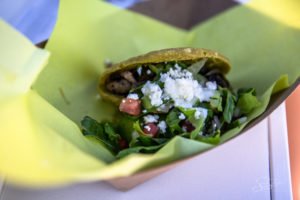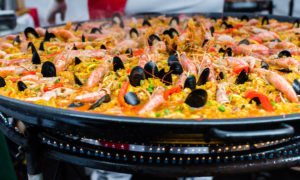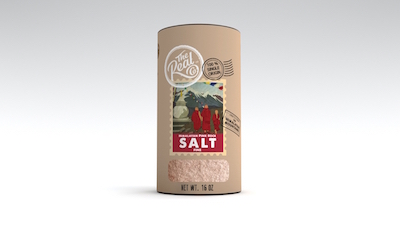(Gerry Furth-Sides) SAUCE HAIRCARE products first and foremost work. We tried three of them and were “wowed” as much by the sheen, supplement, clean-feeling and longer lasting results, as by their natural plant-based ingredient influence
Even better, the products, plus recipes and fragrances, are inspired by the best plant foods ingredients or foods you might find in your kitchen. This all fits into the thinking of avocado facial masks or henna rinses The official company definition reads: SAUCE [sôs] noun: 1. a thick liquid used to add moistness, flavor and visual appeal 2. something that adds piquancy or zest. as: Their ad playfully directs: “Please don’t eat our products, they’re meant for your hair!”
The current trend of getting back to more traditional and natural forms of care, such as “Plant-based” has become the rage for good reason: it is natural and healthy. It is also usually lower in cost than most chemical beauty products.

Salon supple and sleek define how my hair looked after using the moisturizing shampoo. And it lasted for days.
SAUCE beauty products are inspired by global recipes and the women behind them using ingredient-driven botanicals and extracts, and retaining their inviting aromas & sensorial textures. All SAUCE products are made to be color-safe. It is a company’s policy not to test on animals,
The products in the SAUCE shampoo are: Jarrah honey and Jamaican black castor oil. The intense repair oil treatment is made with Olive oil, thyme and basil oils. Avocado, argan oil, monoi oil is in the deep moisture mask.
SAUCE uses the most cutting edge or classic ingredients. Jarrah honey, a rarer product harvested from a species of eucalyptus tree found only in the most remote parts of Western Australia has been proclaimed the new “superfood.” Its properties are natural to create a wonderful shampoo.
Move over, Manuka. Jarrah honey has two to three times higher levels of antioxidants in comparison. Its components are ideal as natural anti-ageings that boosting collagen and elastin production, and supporting cell renewal. Research by the Australian government also documented its high antibacterial activity levels.
This superfood, new to us and relatively new to the market, has a fascinating background. Though only found in the most remote parts of Western Australia, is one of the most common species of Eucalyptus tree. The tree is huge and lives up to 1000 years. It grows up to (130 ft) high with a trunk up to 9.8 ft) in diameter, and has rough, greyish-brown, vertically grooved, fibrous bark which sheds in long flat strips. The scientific name marginata botanical name Eucalyptus marginata, which refers to the light-colored vein on the border around its leaves.
The jarrah tree blooms every 2 or 3 years in spring and early summer. The white flowers are 1/3 to ¼ inches in diameter and come in clusers of seven to11. The nectar produced has a low moisture content. The tree is highly valued for the wood and honey it produces.
The SAUCE intense repair oil treatment is made with Olive oil, thyme and basil oils. The ingeniousness of this idea that was also prevalent in ancient Greece is matched by how well it is done. For example, only a very small amount is necessary so even a small bottle goes a long way.
Avocado, argan oil, monoi oil is in the deep moisture mask. It makes your hair look luxuriant and feel light. It was also pleasant surprise that the treatment takes five minutes and not 55. We have not had good luck with argan oil in the past because it makes hair feel weighted and oily. Here it is balanced out by the other ingredients to solve this problem. One of the ingredients is Monoï oil, is one of the cutting-edge ingredients used in SAUCE. This infused perfume-oil made from soaking the petals of Tahitian gardenias in coconut oil is commonly used among the French Polynesians as a hair and skin softener. Already popular in Europe, it is just not gaining popularity in the UA.

Avocado, argan oil, monoi oil is in the deep moisture mask makes your hair look luxuriant and feel light.
SAUCE founder Andy Rah has two passions: haircare products and delicious food. He has created and marketed haircare products for top beauty companies like L’Oréal, TIGI/Unilever, and Macadamia Beauty for thirteen years, while, in his words, “coming to love cooking great meals for friends and family.” It wasn’t exactly Bill Bowerman of NIKE stumbling onto the pattern of his running shoe bottoms while watching his wife make waffles, but it is the same idea!
This is why SAUCE products contain beneficial and natural ingredients, along with the necessary non-natural ingredients to keep them fresh, and few contain wheat-derived ingredients, silicones, or salt. They are also sulfate-free and paraben-free.
Everything that still has value never gets too old to use. Plants and their use in medicine and beauty products goes back at least 4,ooo years are definitely an example.. There are references to plants being used in medicine on papyrus writings from the Ancient Chinese and Ancient Egyptians. Many of the products (such as kohl) are still in existence to this day.
It wasn’t until the 19th Century that scientists began looking more closely at the compounds of plants, analyzing their active compounds to extracting the active ingredients and develop more sophisticated and more expensive products. And now the circle is swinging back again.
















 Gerry Furth-Sides
Gerry Furth-Sides  Barbara Hansen
Barbara Hansen  Chef-owner Alain Cohen
Chef-owner Alain Cohen  Roberta Deen
Roberta Deen  Jose Martinez
Jose Martinez  Nivedita Basu
Nivedita Basu